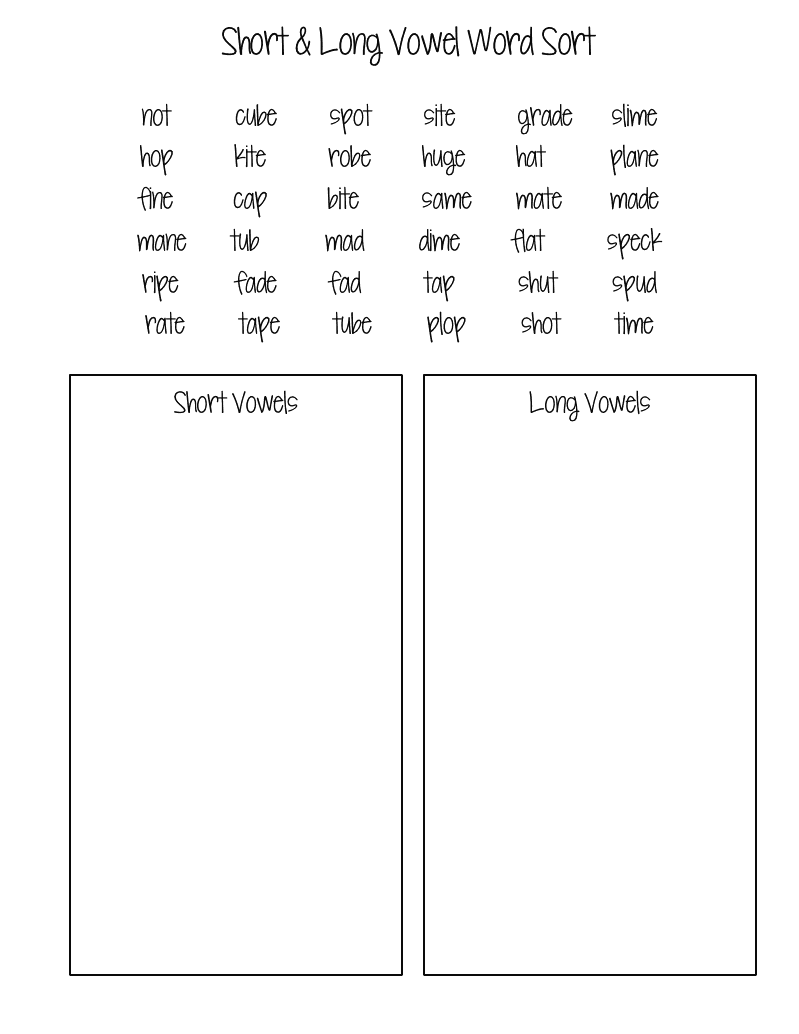


Just do the first activity of saying the sounds and sorting them into long and short vowel words.The backs of the envelopes can be glued to stiff cardboard and mounted on a wall so they’re permanently upright and easy to use for a quick activity. Then add that strip to the correct paper clip at the bottom of the envelope. Once the sorting is completed, sort the word strips again into their specific vowel either by saying the word and deciding which vowel it belongs to, or by reading the word and spotting the vowel. Sort the pictures into long and short vowels, slipping each vowel strip into a storage pocket as you go. Have children look at the pictures, stretching out the sounds to make sure they understand the activity. If this is new, just start with one or two vowels rather than all 5. Attach a paper clip to each hole at the bottom of the envelopes.īefore attempting this activity talk about the differences between long and short vowel sounds.Cut on the lines to separate the strips, then punch a hole on each dot. Vowel strips: Fold the card stock in half horizontally on the dotted line, adding glue to the paper so that the vowel strips are now double-sided.If your child is just using this activity to sort, don’t worry about the holes. Use a hole punch to punch 5 holes at the bottom of the envelope – dots are marked for you. Sorting envelopes: Cut around the envelope templates, fold on the dotted lines and glue into a pocket.Print off the 3 pages onto card stock and assemble the parts. In this case it isn’t (since it would need to sound like ‘tine’) therefore it cannot be a long vowel.ĭownload this Long and Short Vowel Sort and Read at the bottom of this post. Fortunately it’s easy to stretch out the vowel sounds, so when they deliberately say t-i-n they are trying to decide whether the middle sound is like the name of the letter. When they look at a picture of a tin, for example, they need to stretch out the word and say it slowly so they can really listen to the sounds they hear. Since this is usually one of the first things taught, via the ABC song, many children have a passing knowledge of this well before they are ready to start reading. That is, A E I O U as a long vowel is pronounced as d ay, m e, l ike, t oad and you. The simplest way for children to decide whether a word contains a long vowel or a short vowel (or both) is to be familiar with letter names. This simple activity is designed so that kids just learning to hear the difference can use it for sorting, and children further ahead can practice their reading, too! And being able to hear the difference is a good place to start. Being able to distinguish between long vowels and short vowels is super important when learning to read and write.


 0 kommentar(er)
0 kommentar(er)
